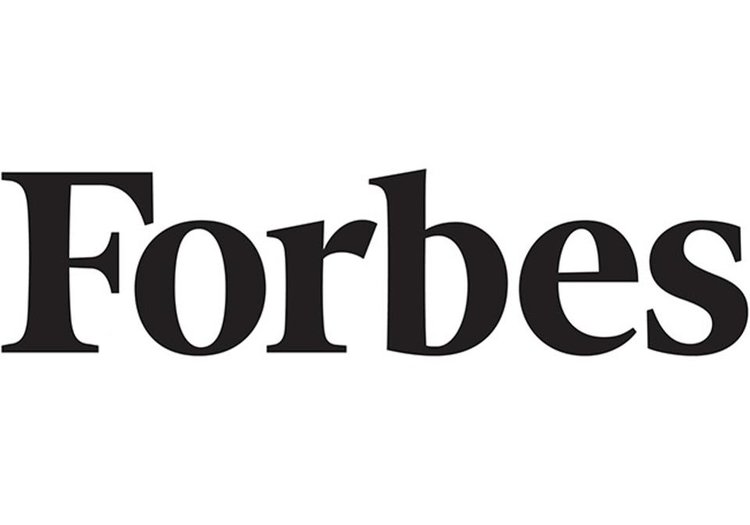September 08, 2017
The Golden Age For Small Business SaaS Is Almost Here (Forbes) »

POST WRITTEN BY
Cory Capoccia
Cory Capoccia is president at Womply, a SaaS company that partners with the payments industry to empower businesses with tech and data.
Like all emerging technologies, software as a service (SaaS) has had to grow up. According to Gartner, SaaS has officially gone mainstream and is predicted to reach the coveted “plateau of productivity” in the next year or two. This means businesses and software vendors are on the verge of finding nirvana.
Despite this progress, SaaS has woefully underserved American small businesses. For years, many growth-stage software companies have started out by selling to small and medium-sized businesses (SMBs) while their products are feature-lite and inexpensive. Due to inefficiencies in distribution and pressure from investors, most SaaS startups eventually move upstream in favor of larger, more lucrative enterprise deals as their products become more robust.
Why haven’t more SaaS companies kept their focus on SMBs? On the surface, small businesses are a highly attractive segment. According to data from the U.S. Small Business Administration, nearly 57 million people work for small businesses in this country alone. That’s a huge, largely untapped market. Let’s say you sell B2B marketing or advertising services. The average SMB spends $400 per month to promote their business, so it’s an $11.5 billion market. That’s a massive opportunity, with similar potential in other product and service categories.
Companies like Intuit, Xero and Square have built big businesses by serving smaller companies, but countless others have failed badly or moved upstream in years past. Despite the market’s checkered background with technology, many of the historical roadblocks are going away at an incredible pace, paving the way for a golden age of SaaS for small businesses.
Here’s a look at what’s been holding things back, and why everything’s about to change for the better.
Hierarchy Of Needs
For a long time, SaaS companies have struggled to align their products with the biggest needs for SMBs. In the enterprise, software’s use cases are clearer, the users are well-defined and the budgets allow for more wiggle room. None of that is true for small businesses. Software has to do different jobs, the users wear many hats and every penny is scrutinized.
My company recently asked nearly 3,000 small business owners about their biggest worries. The resounding answers were a lack of time and an ongoing tension between controlling costs and attracting customers. For small business owners, company revenue is synonymous with personal income. Time is money, customers are money and everything that gets in the way gets discarded. SaaS companies have to build accordingly.
Most software providers have struggled to build products that do the very specific jobs SMBs need to be done, in a way that minimizes user effort. Software in the enterprise is designed to suck time in the name of engagement, but software for small businesses needs to save time and focus on the most critical things. If it doesn’t save time, attract customers or otherwise improve the company’s bottom line, SMBs will not use the software.
Product design philosophies that incorporate customer empathy or Clayton Christensen’s “jobs theory” are big steps in the right direction. Feature creep doesn’t impress SMBs. Clean, simple solutions to everyday problems do. Some SaaS companies are starting to think this way and build products that focus on the right things and save time instead of consuming it.
Late Adopters
Small business owners skew older, and most didn’t grow up with technology. That’s changing quickly, as 10,000 baby boomers retire every day, and millennials start businesses earlier, at twice the rate of their older predecessors. These days, even a majority of older Americans use social media and have smartphones, and the integration of technology into everyday life has taken the mystery and fear out of the equation.
As people become more comfortable with tech in general, small business owners are warming up to SaaS at a breakneck speed as well. According to research from Techaisle, 94% of U.S. SMBs will be using SaaS by the end of this year. That’s up from 73% last year, 58% in 2014 and a mere 27% in 2011 — a steep adoption curve in a short period of time. Furthermore, Intuit found that 85% of SMBs plan to invest more in SaaS over the next five years, with more and more running their core CRMs in the cloud each year. The market is ripe.
Walled Gardens
With demand for SaaS growing among SMBs, one of the biggest remaining challenges is to crack distribution. While massive, the SMB market is incredibly siloed, and products rarely go viral. Many SMBs are local brick-and-mortar companies spanning a variety of industries. Given their various industry segments, owners from one vertical, such as a salon, rarely chat with their counterparts from another vertical, like restaurateurs, about the latest software they’re using. Also, most SMB software is aimed at business owners who don’t move across companies, which negates the cross-pollination effect you see in the enterprise.
This means SaaS companies have to think more strategically about distribution. Intuit accomplished this by turning accountants who served small businesses on to its boxed software and then using that foot in the door to sell its SaaS versions directly to SMBs. Square used hardware (its card reader) as a beachhead for selling a larger swath of software products. In every case, distribution strategy matters more when you’re serving SMBs because you can’t just hire hungry salespeople and live on a handful of big, expensive enterprise contracts.
SaaS is here to stay, and small businesses are getting onboard. The business opportunity is huge, and it’s exciting to think about being part of a renaissance on Main Street. As technology companies and local business owners become closer aligned, we’ll see newfound power shift to smaller companies and significantly more value emerge from the maturing SMB ecosystem.